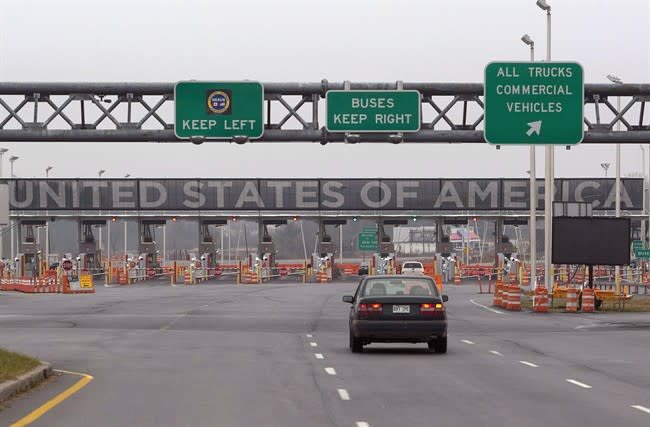Border agency needs tighter controls, some dangerous people get in: auditor

OTTAWA - Border controls need to be tighter because some dangerous people still manage to slip into the country despite stricter post-9-11 scrutiny, the auditor general said Tuesday.
Michael Ferguson's latest report said the Canada Border Services Agency doesn't always get the information it needs to pinpoint threats.
The agency is supposed to get advance information about arriving air travellers, but an audit sample shows that the data can be incomplete or missing entirely.
And the RCMP, which watches for people sneaking across the border between regular ports of entry, can't say for sure what percentage of those people get nabbed.
Ferguson said improvements have been made in a border agency program to target air passengers who pose a danger to national security, but some still slip past the controls.
The agency also needs to improve its monitoring of high-risk individuals trying to immigrate.
Public Safety Minister Steven Blaney said he has asked the agency and the RCMP to address Ferguson's findings and recommendations.
"Indeed, officials are already in the process of implementing systems to further improve the safety of our border," Blaney said Tuesday.
"We will also be bringing forward entry and exit systems to improve information-sharing between law enforcement agencies at the border to better protect Canadians and to safeguard our fair and generous immigration system."
The audit acknowledged the government has a big job. In 2011-2012, the agency processed 99 million travellers at points of entry, about a third of them foreigners. It denied entry to 54,000 people at the border and intercepted another 4,000 overseas.
In an effort to understand how people sneak in, the auditors looked at a random sample of 49 people who entered the country illegally in the last five years.
In 15 cases, the people came in at a regular point of entry. In 11 of the 15, they were found inadmissible, but were allowed in temporarily with a requirement to report back the next day for departure or further examination, in accordance with the Immigration and Refugee Protection Act. They never showed up.
The other four cases involved what are called port runners — people who go through a port of entry, but don't stop or don't complete an examination.
The audit said the agency doesn't monitor people who fail to report after entry. Arrest warrants are issued.
Ferguson says the border guards need a better measure of how many people board flights to Canada without proper documents and should find a better way to measure how their controls are working.
He says the RCMP also lacks the information it needs to judge the success of its border enforcement efforts. For example, in 2011-2012 the Mounties tallied the number of illegals caught and the number who evaded capture. The next year, they counted only those they arrested.
"Both types of information are necessary to assess how effective the teams are and whether they are reducing illegal entries," the report said.
The Mounties have set performance measures, but have not systematically gathered and analyzed the relevant information, the report added.
Ferguson said that while the border agency has made significant progress in some of its efforts to detect threats, there's more to be done.
"It often does not get the information it needs to identify those travellers before they arrive in Canada," he said.
"Furthermore, even when the agency has the information, we found that controls do not always work. We also found that the RCMP does not know the extent to which it is successful in intercepting people who enter the country illegally between ports of entry."
He said many of the problems can be solved with better analysis of existing information and improved monitoring.
The agency agrees that it needs better quality information about incoming air passengers and has a program to be in place by next June to improve the system.
It also said it is improving its lookout systems to catch inadmissible immigrants.
Ferguson said that illegals can be involved in terrorism or organized crime and pose costs for taxpayers. Immigration Canada estimates each rejected refugee claimant, some of whom enter illegally, costs the country $26,000.

